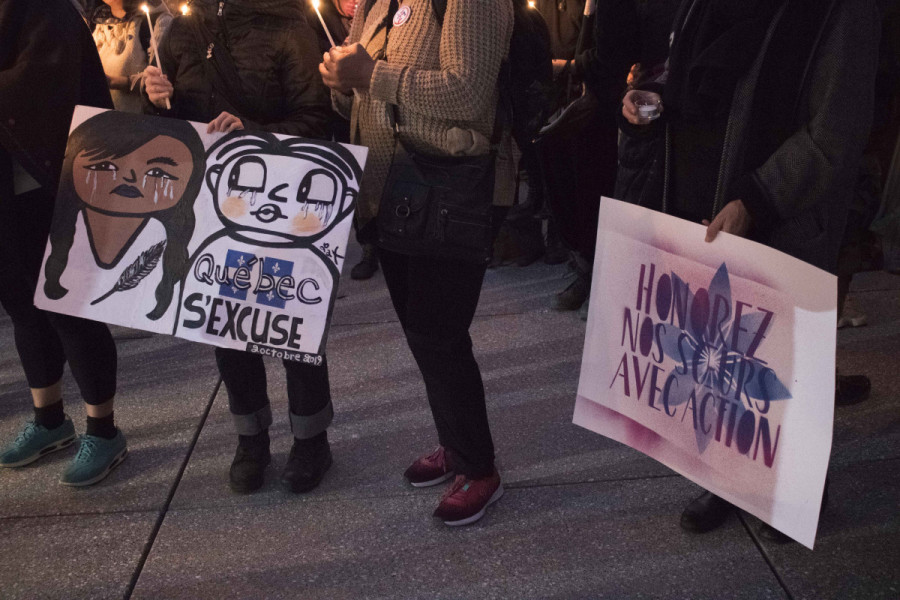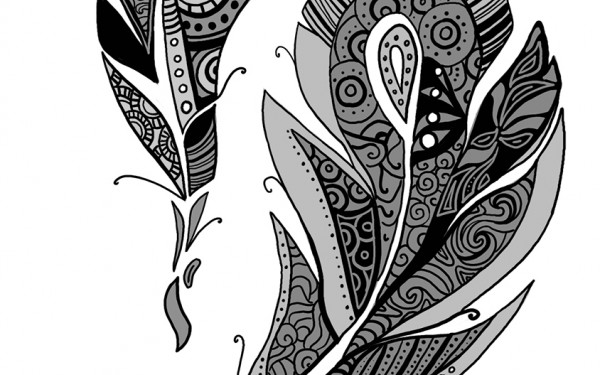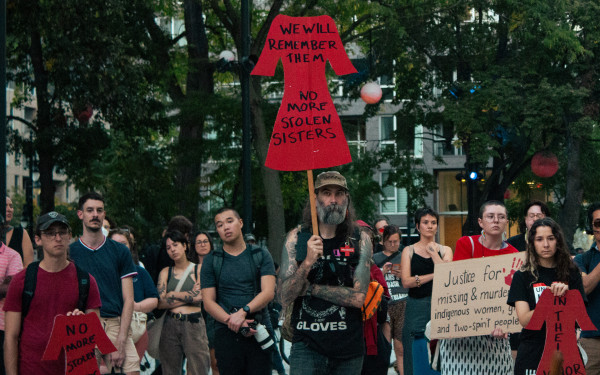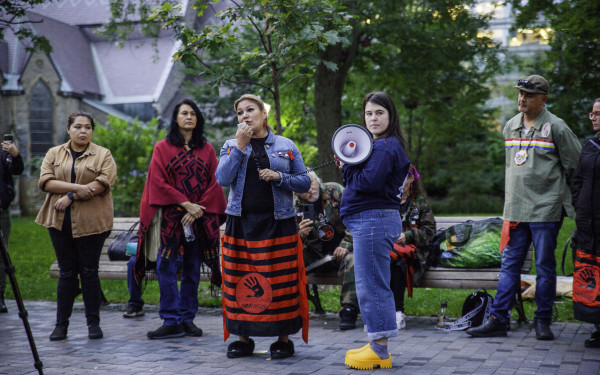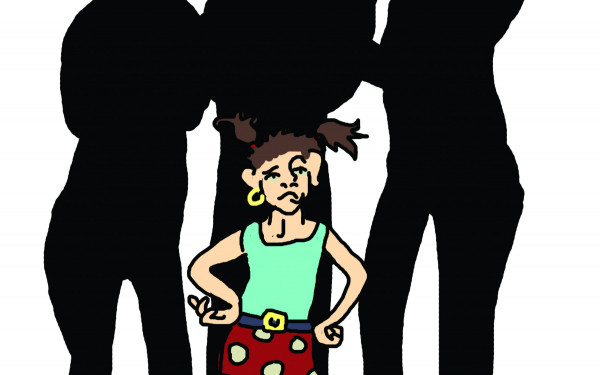Fourteenth Annual Vigil Honours Missing and Murdered Indigenous Women and Girls
Hundreds Gather Behind Musée d’Art Contemporain for Somber Ceremony
Hundreds gathered on Friday evening behind the Musée d’art contemporain to honour missing and murdered Indigenous women, girls, trans and two-spirited people in a candlelight vigil.
Bearing signs reading “Honour our sisters with action,” those in attendance stood silently as survivors of violence and members of First Nations and Inuit communities across Canada shared their art and their stories.
The fourteenth annual Memorial Vigil for Missing and Murdered Indigenous Women, Girls, Trans and Two-Spirit People was a joint effort between the Centre for Gender Advocacy and the Native Women’s Shelter.
“I think the spirit of why we’re here tonight is that we don’t forget and we continue with acts of resistance and persistence to remember the truth of the history,” said Louise McDonald, Bear Clan Mother from the Akwesasne Mohawk Community.
As the vigil began, Annie Pisuktie, secretary of the Southern Quebec Inuit Association, took the time to inform those in attendance that an Inuk woman, Donna Paré, is currently missing.
“I just wanted to mention that there are many Inuit women who are murdered here in Montreal,” she told the crowd in Inuktitut. “They do disappear, as of right now, this evening we have a woman who has been missing for almost a year.”
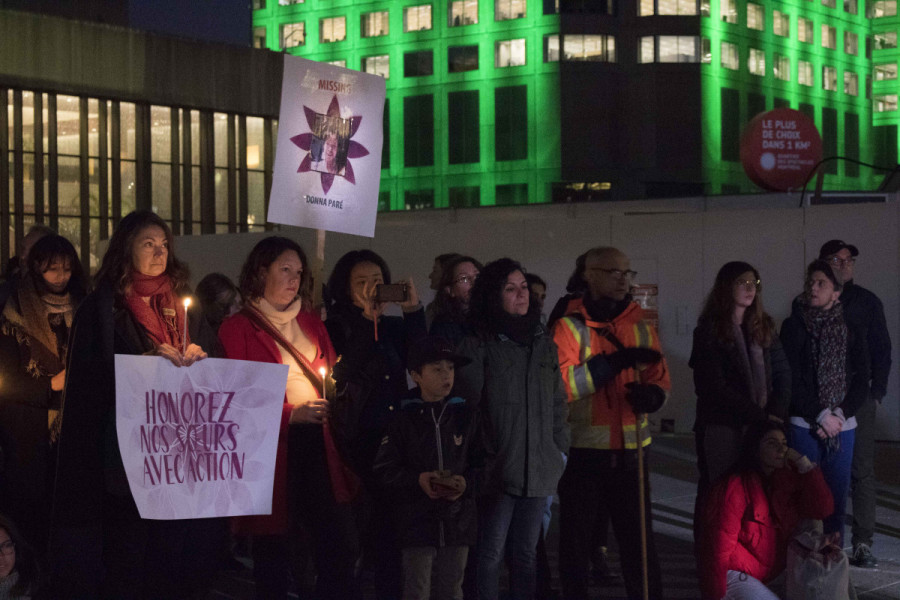
While Indigenous people are waiting to see government action, Dayna Danger of the Center for Gender Advocacy and campaigner and lead coordinator of Missing Justice, a solidarity group with MMIWGT2S, spoke to the need for community action in the wake of these reports.
“It is now your job that you know, to listen, to listen more and to do something about it,” she said. “It’s a national crisis. This work is messy and this work is traumatic, and this work is empowering.”
She went on to explain that there is a big problem here in Tio’tia:ke, Montreal, in which organizations and people can’t come together to continue to advocate for Indigenous women and girls, their safety, and the families affected by the disappearance and murder of Indigenous peoples.
“There’s no reason that a solidarity group should be leading this march and vigil, with no Indigenous lead,” she said.
“We want this to stop. I shouldn’t have this job, we shouldn’t be meeting here doing this. This doesn’t feel right, I don’t even feel good being up here on stage telling you this. I don’t want to take up any of this space, I just want to support those affected.”
Throughout the night, speakers highlighted the importance of women in society, urging those in attendance to help return women to their rightful place and tying it into the environment as the climate’s dire situation becomes increasingly clear.
Indigneous women are heirs to the land, and have clear title to it. By extension, the more that we mistreat our earth, the more that Indigenous women go missing and murdered, explained McDonald. There is an ongoing genocide, she said.
“The more that we allow this erasure of Indigenous women in this country and in the United States, the more that the climate will decline,” said McDonald. “Unless we return women to a rightful place, in a rightful position of sacredness and of worth and value, the more that we are going to decline as a society.”
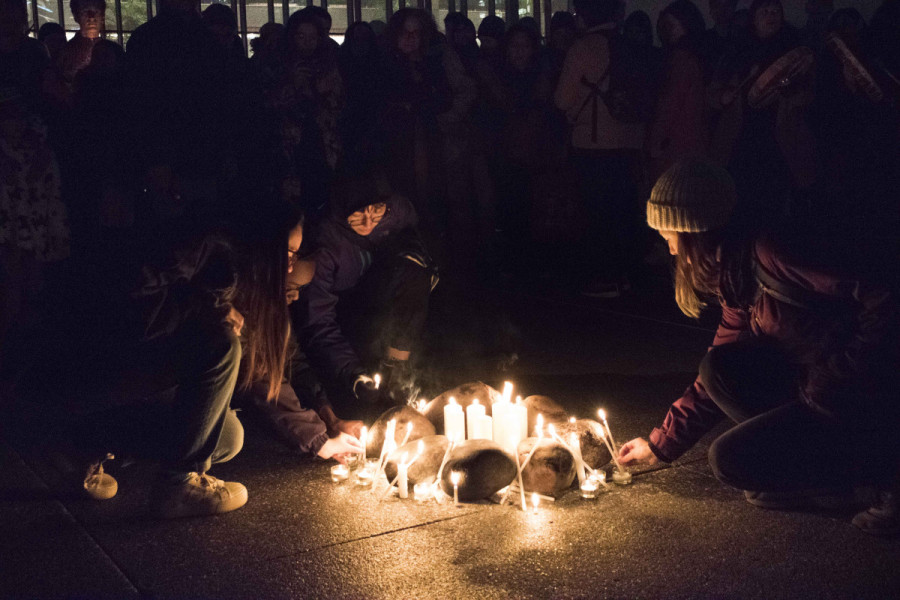
Perhaps most striking was a performance piece put on by Rebecca Belmore, an Anishinaabe artist, whose work is being exhibited at the MAC through Oct. 6.
Belmore, barefoot, walked into the fountain behind the museum, collecting buckets of water. Using the water, she proceeded to wash large rocks covered with red paint, symbolising blood.
As she washed and wiped the rocks clean, taking careful care, the crowd of onlookers stood silent and moved. Once the rocks had been cleaned, Belmore washed her hands of red and walked off through the crowd, ending her piece.
The rocks were then gathered in the center of the circle that had formed around Belmore and her piece, several large votives lit, as those in attendance were invited to lay their candles alongside to pay their respects to those who have been lost.
As the event came to a close, Danger left those in attendance with a final plea.
“This is my call to action for our community to come together, because families who have been affected are having a hard time doing this work and have been doing this work for far too long,” she said.
“Thank you for being here, and please continue to be here for us.”

